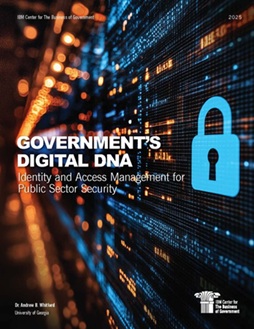
Understanding Government's Digital Foundation: New Report Explores Identity and Access Management for the Public Sector

In an era where digital transformation is fundamentally reshaping public administration, the question of who has access to what information—and how we verify their identity—has become paramount. As government agencies navigate an increasingly complex cybersecurity landscape, protecting sensitive data, securing critical infrastructure, and maintaining public trust have never been more urgent.
Dr. Whitford's report offers a timely perspective. With the proliferation of remote work, cloud-based services, and interconnected systems, traditional perimeter-based security approaches are no longer sufficient. Identity and Access Management (IAM) systems now serve as the cornerstone of effective governance, enabling agencies to implement Zero Trust Architecture principles that require continuous verification rather than episodic checks.
Key Insights from the Research
The report examines IAM through three critical lenses—individual, organizational, and societal—revealing how identity verification and authentication pervade virtually every aspect of modern government operations. From helping citizens access Social Security benefits to enabling secure interagency collaboration on national security matters, robust IAM systems are essential infrastructure for democracy itself.
Six Critical Challenges Identified
Dr. Whitford identifies six key challenges facing public sector identity management, ranging from operational to systemic:
- Heavy reliance on third-party vendors for IAM provisioning, creating complex partnerships that are essential yet introduce new risks
- Cross-functional governance burdens requiring continuous policy review across IT, legal, and business units
- Fragmentation of identity verification systems in the absence of a unified national identity framework
- Balancing privacy and security in system design to build resilient public infrastructure
- Emergent threat vectors including quantum computing, AI-based intrusions, deepfakes, and IoT vulnerabilities
- Operationalizing Zero Trust Architecture, which demands fundamental cultural and operational transformation
Six Actionable Recommendations
To address these challenges, the report proposes strategic recommendations that progress from immediate operational improvements to long-term structural changes:
- Leverage public-private partnerships to harness external expertise, particularly for cloud and AI-driven solutions
- Institutionalize identity governance functions to ensure consistent, credible commitments to security
- Adopt hybrid IAM architectures that combine centralized oversight with decentralized flexibility
- Treat IAM as foundational secure infrastructure, akin to utilities, given its critical importance
- Prioritize privacy-enhancing technologies and privacy-by-design principles to balance security with user trust
- Develop executive-level fluency in identity ecosystems and Zero Trust principles to drive informed decision-making
Understanding the Broader Context
What makes this report particularly valuable is its exploration of four current trends shaping the IAM landscape:
- The tension between centralized and decentralized forces in system implementation
- Governance across multiple agencies, with key roles played by NIST and CISA
- The changing space of third-party actors, particularly corporate vendors and suppliers
- The shifting technology landscape, from cloud-based solutions to artificial intelligence
Dr. Whitford's analysis emphasizes that successful IAM strategies must address inevitable tradeoffs and anticipate human behavior and incentives. As he notes, "The best policies don't ignore tradeoffs—they expect them and then manage them."
Looking to the Future
The report also examines emerging approaches to decentralized identity, including federated identity systems, blockchain-based solutions, differential privacy, and federated learning. These innovations represent potential pathways for giving users greater control over their identity data while maintaining robust security protections.
Perhaps most importantly, the research underscores that IAM is more than a technology problem—it's a governance challenge that requires participation from every level of an organization. Zero Trust Architecture, in particular, represents not just a set of tools but a fundamental paradigm shift in how we think about cybersecurity.
A Critical Resource for Government Leaders
Through a detailed examination of six key challenges facing identity management in the public sector, this report not only identifies the hurdles but also proposes six actionable recommendations to guide the future of IAM. These insights are particularly valuable as agencies strive to balance security, compliance, and operational efficiency in a rapidly changing digital landscape."
The report provides a forward-looking framework for policymakers, practitioners, and scholars alike, addressing the integration of advanced technologies and the evolving nature of governance in the digital age.
We encourage government leaders, cybersecurity professionals, policy researchers, and anyone interested in the future of public sector security to read the complete report. It serves as both a comprehensive assessment of current challenges and a practical roadmap for strengthening identity and access management across the federal government.



